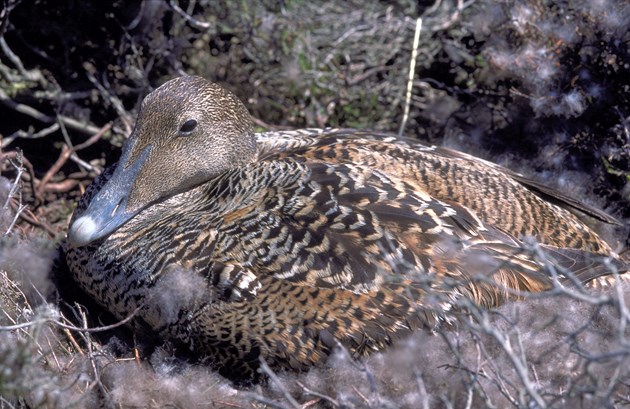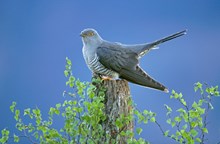28 March, 2019
Animal mums go above and beyond

With Mother’s Day fast approaching, Scotland’s birds provide some wonderful examples of great parenting – and a few surprises.
Birds are often amazing mums, running the gauntlet from self-sacrificing, resourceful and inspiring – to downright disgusting. All of this is in pursuit of giving their young a chance to survive, which is no easy task in the wild.
Andy Douse, Scottish Natural Heritage (SNH) ornithologist, said:
“There are extraordinary examples of mothering behaviour in almost all bird species in Scotland. The parenting responsibilities are sometimes split between mother and father, but it’s often the mum who spends the most – or sometimes all - the time on the nest. There’s also a lot of other incredible behaviour which shows the lengths female birds will go to protect and nourish their young.”
Eider ducks are one example of our feathered friends’ great mothering skills. The females take all responsibility for raising young. They pluck their own down to help line their nests, and then never leave their eggs as they incubate for up to 26 days. They eat nothing during this time, fasting and living off their fat reserves. They even excrete on their eggs to defend their nests from predators.
As well, eiders which nest communally have an amazing crèche system to help rear ducklings. Many duck species use these ‘crèches,’ where up to 50 ducklings can be taken care of by an older, experienced duck, giving a break to young mums. If the duck crèche encounters a threat, the chicks will all huddle together, with female ducks on the outside to protect them. A particularly good place to see this is Forvie National Nature Reserve in North East Scotland, where up to 2,000 eiders gather to nest in the heather and grass.
Another wonderful image of mothering comes from the grebe family. Once their chicks fledge, great crested and little grebes often swim ‘piggyback,’ carrying their young on their backs and protecting them with their wings.
Other birds take astonishing risk to protect their young. Waders like lapwing, common sandpiper and ringed plover mums, as well as duck and geese mothers, pretend to have a broken wing to lure predators away from their nests.
But the award for most cunning mum would certainly go to the cuckoo. Cuckoos never build their own nest, preferring instead to lay their eggs in other species’ unattended nests. A cuckoo can remove an egg laid by a host mother, lay her own egg, and fly off with the host egg in under 10 seconds. Amazingly, a cuckoo can make its egg look similar in colour and pattern to those in the host nest, and can lay up to 24 eggs in a season. They may not win mother of the year, but they often achieve their goal of chick survival, with only about 20% of hosts detecting their deception.
ENDS
MEDIA QUERIES
For more information, contact SNH media relations & PR officer, Vicki Mowat, on 0131 316 2659 or vicki.mowat@nature.scot or the main SNH press office on 0131 316 2655 or snhmedia@nature.scot.
Contact information
- Name
- NatureScot Media
- Telephone
- 0131 316 2655
- media@nature.scot
Notes to editors
Scottish Natural Heritage is the government's adviser on all aspects of nature and landscape across Scotland. Our role is to help everyone understand, value and enjoy Scotland's nature now and in the future. For more information, visit our website at www.nature.scot. SNH media is also on Twitter at http://twitter.com/nature_scot
NatureScot is Scotland's nature agency. We work to enhance our natural environment in Scotland and inspire everyone to care more about it. Our priority is a nature-rich future for Scotland and an effective response to the climate emergency. For more information, visit our website at www.nature.scot or follow us on X at https://x.com/NatureScot
’S e NatureScot buidheann nàdair na h-Alba. Bidh sinn a’ neartachadh àrainneachd na h-Alba agus a’ brosnachadh dhaoine gu barrachd suim a chur ann an nàdar. Tha e mar phrìomhachas againn gum bi nàdar na h-Alba beairteach agus gun dèilig sinn gu h-èifeachdach le èiginn na gnàth-shìde. Tha an tuilleadh fiosrachaidh aig www.nature.scot no air X aig https://x.com/NatureScot



